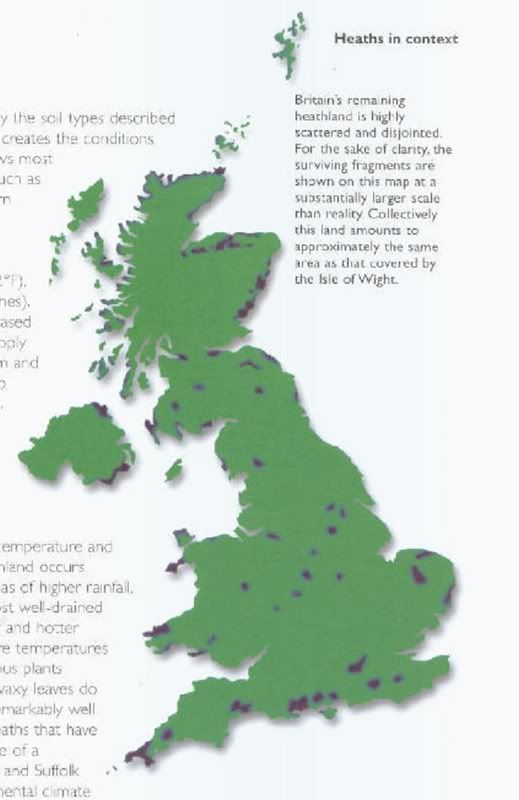James Iím sending you a short book published by the National Trust on this and Iím happy for it to be forwarded to anyone else who might be interested.
Iíve written on this before but this map shows just how rare it now is.

The Dornoch area is costal heath and it would take a geologist to say shich parts of the course were pure links.
Heathlands
is one of the most managed environments we have. Robinís comments show how it can revert to wilderness. Although the land is often to poor to have been used for farming it had the following economic factors to exploit e..g
Gorse, or Furze, was prised wood. Both for building and ovens as it burned at a very high temperature.
Sandy soil is ideal for rabbits, This was a huge Ďindustryí in Victorian times. Fur and meat.
Gravel, and peaty turf was extracted.
Heather, honey production.
Sheep were grazed
Itís the animals that keep the tree saplings down.
Around the 1970ís environmentalists became concerned at the loss of Heathland characteristics and golf course restoration followed that. I was told there are still members at Walton Heath who can recall being able to see half the course from the clubhouse!
I think golf courses are a suitable use of the land going forward as long as they donít take up to much area on each heath and they managed the areas of Ďroughí in a suitable manner.